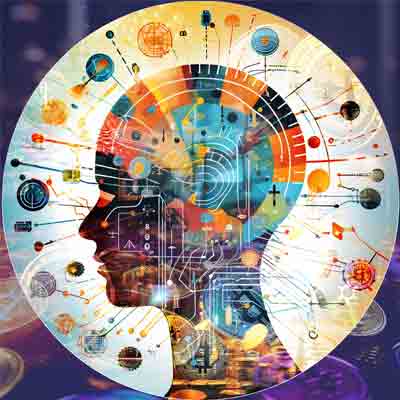Forget crypto prices. From AI integration to tokenized real estate, Web3 trends are reshaping industries as 2025 approaches.
As we hurtle towards the final quarter of 2024, Web3 continues to reshape industries and redefine our digital interactions, while attention remains on the yo-yo prices of cryptocurrencies. Look closer and there’s a lot happening.
From the rise of AI-powered decentralized applications to the tokenization of real-world assets (RWA), the trends emerging in the Web3 space are not just technological advancements, but paradigm shifts that promise to revolutionize the way we interact with the digital world. Let’s delve into the top ten Web3 trends that are making waves in 2024 and are set to shape the landscape in 2025.
1. AI-Web3 Symbiosis: Intelligent Decentralized Systems Are Coming
The integration of Artificial Intelligence (AI) with Web3 technologies in 2024 is pushing the boundaries of what’s possible in decentralized applications (dApps) and distributed ledger technologies.
Oracle networks
One notable AI-powered smart contract platform is the oracle network Chainlink, which has seen a 300% increase in adoption rates since the beginning of 2024. By leveraging machine learning algorithms, Chainlink has dramatically improved the efficiency and accuracy of oracle networks, reducing transaction times by up to 75% and enhancing the reliability of data feeds.
Decentralized Healthcare Records
The collaboration between AI and Web3 is also revolutionizing data management and content verification.
In the healthcare sector, encumbered by convoluted data practices that inhibit the sharing of vital medical information across different parties, companies like MedicalChain are using AI algorithms within Web3 frameworks to enable secure, decentralized management of medical records. Techniques such as secure multi-party computation, homomorphic encryption and federated learning allow AI models to analyze sensitive data ‘in a black box’, preserving individual privacy. Medical information remains encrypted and inaccessible to unauthorized parties, yet the AI analysis can still glean insights from it.
2. The RWA Tokenization Revolution
The tokenization of real-world assets (RWA) has gained significant traction in 2024, spearheaded by traditional finance giants like BlackRock. The total market cap of tokenized real-world assets hit $5 trillion in the middle of the year. This trend is making traditionally illiquid assets more accessible and tradable.
Real estate protocols have tokenized over $1 billion worth of properties by Q2 2024. This has allowed fractional ownership of prime real estate, easing access to a market that was previously out of reach for many investors.
In the art world, platforms like Maecenas have tokenized masterpieces like Picassos worth over $500 million, allowing art enthusiasts to own fractions of world-renowned artworks. This trend is changing investment paradigms and reshaping how we perceive ownership in the digital age.
3. Sustainable Blockchain: Crypto Goes Green
Environmental concerns have been a significant hurdle for blockchain adoption, but 2024 has seen a decisive shift from the very energy-hungry Proof-of-Work to Proof-of-Stake. The Ethereum network’s transition to Proof-of-Stake (PoS) in late 2022 blazed a trail, and now we’re seeing the fruits of this green revolution.
Cardano, another proof-of-stake blockchain, reported a 99.9% reduction in energy consumption compared to traditional Proof-of-Work systems. This approach has attracted environmentally-conscious investors and developers, with Cardano’s DeFi ecosystem growing 200% in the first half of 2024.
Carbon-neutral blockchains are becoming the norm rather than the exception. Algorand, which achieved carbon negativity in 2021, has offset over 10 million tons of carbon emissions through its sustainability program by mid-2024.
4. DeFi 2.0: The Next Generation of Decentralized Finance
Decentralized Finance (DeFi) is a new creature in 2024, finally addressing many of the challenges that plagued its early incarnations. DeFi 2.0 platforms are focusing on improved security, scalability, and user experience.
Aave, a leading DeFi protocol, has introduced AI-powered risk assessment tools, reducing the instances of bad debt by 80% compared to the previous year. This has instilled greater confidence in the DeFi ecosystem, attracting institutional investors who were previously wary of the risks associated with decentralized lending and borrowing.
Another milestone in the DeFi space is the rise of cross-chain interoperability. Polkadot’s parachains have facilitated seamless asset transfers across different blockchain networks, with over $50 billion in cross-chain transactions recorded in the first quarter of 2024.
5. The Metaverse Economy: Virtual Worlds, Real Value
The metaverse has gained traction in 2024, with major tech companies and startups alike building immersive digital worlds. These virtual realms are not just for gaming and socializing; they’re becoming hubs of economic activity.
Decentraland, a leading metaverse platform, has seen its virtual real estate market cap surpass $2 billion in 2024. Major brands like Nike and Gucci have established virtual stores in Decentraland, with Nike reporting that 15% of its digital sales now come from its metaverse presence.
The rise of the metaverse has also fueled the growth of virtual economies. Play-to-earn games like Axie Infinity have created new income streams for players, particularly in developing countries. In the Philippines, over 100,000 people now earn a living wage purely from play-to-earn games, marking a significant milestone in the gaming industry.
6. Decentralized Social Media: Taking Back Control
2024 has seen a surge in decentralized social media platforms, as users seek alternatives to centralized platforms plagued by data privacy concerns and algorithmic manipulation.
Mastodon, a decentralized social network, has grown its user base to over 50 million by mid-2024, a tenfold increase from the previous year. This growth has been fueled by its commitment to user privacy and its resistance to censorship, contrasted with growing discontent with centralized platforms.
Another notable player in this space is Mirror, a decentralized publishing platform that allows writers to tokenize their content. By the end of 2024, Mirror had facilitated over $100 million in direct reader-to-writer payments, revolutionizing the economics of online content creation.

7. NFTs Beyond Art: Utility Tokens in the Real World
The NFT art market has cooled since its 2021 peak, but 2024 has seen a resurgence of NFTs in practical applications. Utility NFTs, which provide real-world benefits to holders, have gained significant traction.
Ticketing giant LiveNation has partnered with blockchain platform Flow to issue NFT tickets for concerts and events. These NFT tickets prevent fraud and allow artists to engage with fans long after the event, creating new revenue streams through digital memorabilia and exclusive content.
In education, blockchain-based platforms like Learning Economy Foundation have issued over 1 million verifiable credential NFTs as of mid-2024. These NFTs serve as tamper-proof records of academic achievements and professional certifications.
8. DAOs: The Future of Organizational Governance
Decentralized Autonomous Organizations (DAOs) have come of age in 2024, moving beyond crypto-native applications to disrupt traditional organizational structures.
MakerDAO, one of the oldest and largest DAOs, has expanded its reach beyond the crypto world. In a groundbreaking move, it acquired a chartered bank in the USA, bridging the gap between DeFi and traditional finance. This milestone marks the first time a DAO has owned a regulated financial institution.
The DAO model has also gained traction in the nonprofit sector. The Ocean Cleanup DAO, launched in early 2024, has raised over $100 million for ocean conservation efforts, demonstrating the power of decentralized governance in addressing global challenges.
9. Zero-Knowledge Proofs: Privacy in a Transparent World
As concerns about data privacy continue to grow, zero-knowledge proofs (ZKPs) have emerged as a critical technology in the Web3 ecosystem. ZKPs can verify information without revealing the information itself, striking a balance between transparency and privacy.
Zcash, a privacy-focused cryptocurrency that utilizes ZKPs, has seen its adoption rate increase by 500% in 2024. Major financial institutions, including JPMorgan Chase, have begun integrating Zcash’s technology into their blockchain solutions, signaling a shift towards privacy-preserving finance.
In the field of identity verification, Microsoft’s ION project, which uses ZKPs for decentralized identifiers, has over 100 million users by the end of 2024, marking a significant step towards self-sovereign identity.
10. Prediction Markets: Data-Driven Forecasting
Crypto-based prediction markets are all the rage now, particularly in the context of political events like the 2024 U.S. election. Platforms such as Polymarket process hundreds of millions of dollars weekly, offering real-time insights into public sentiment on various outcomes, such as the presidential election in the USA, which recently became their first market with $1 billion in betting volume.
Prediction markets use blockchain technology in the backend to ensure transparency and efficiency, attracting both casual users and respected forecasters. Prediction markets are not limited to political outcomes. They’re increasingly used in fields such as:
- Economic forecasting
- Sports betting
- Entertainment industry predictions
- Scientific research outcomes
By providing financial incentives for accurate predictions, these markets aggregate knowledge from sources around the world and from every sector of society, outperforming traditional polling and forecasting methods.
Let us know your thoughts! Sign up for a Mindplex account now, join our Telegram, or follow us on Twitter.


.png)

.png)


.png)







0 Comments
0 thoughts on “Ten Explosive Web3 Trends For 2025”